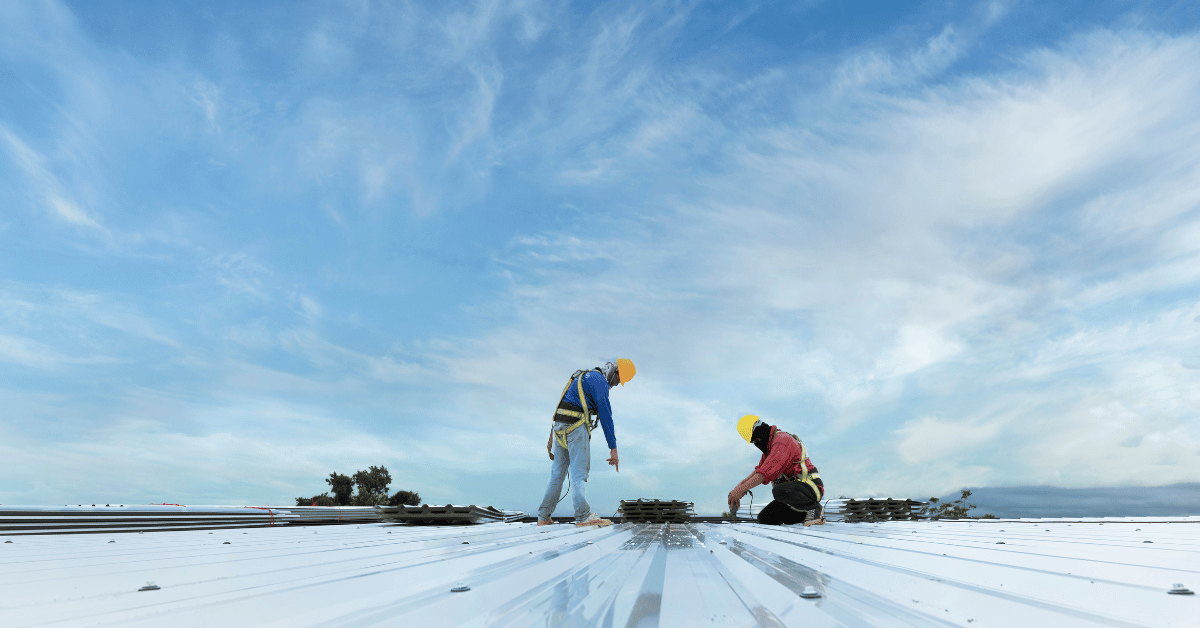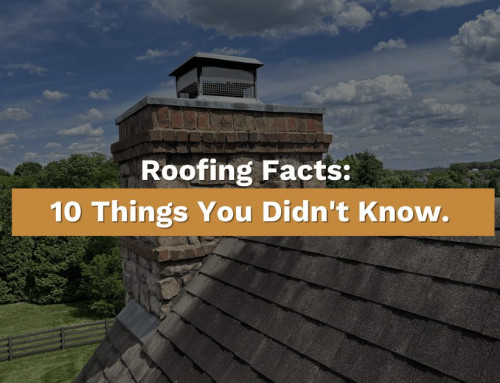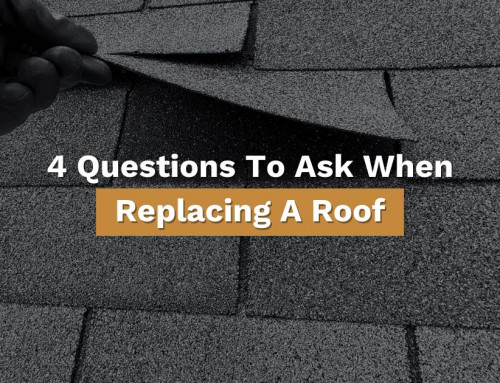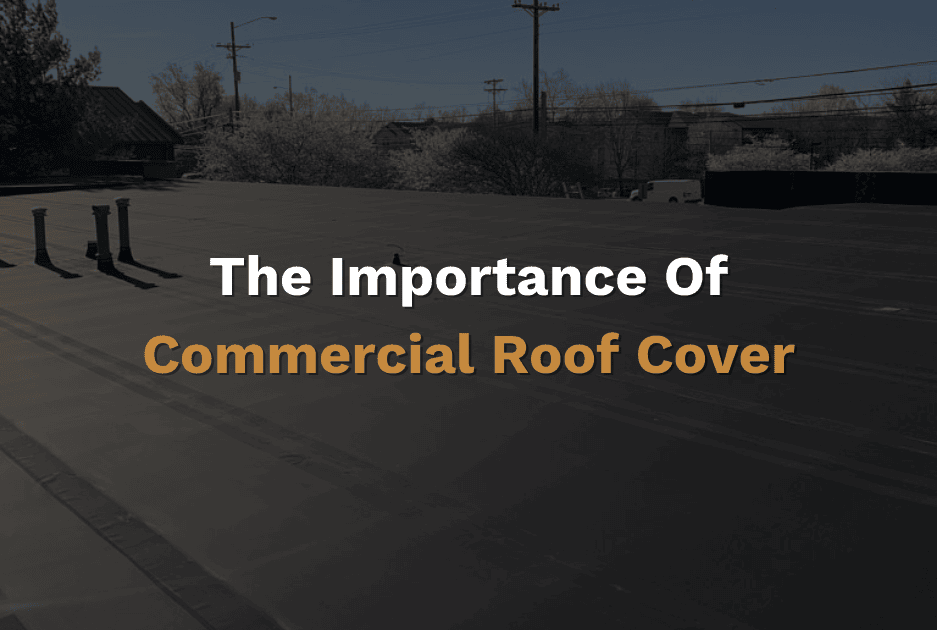
Highlights for the Commercial Roof Cover
Table of Contents
The roof is a commercial building’s first line of defense from natural hazards such as wind, rain, fire, hail, ice, snow, and extreme heat. It is also the most vulnerable part of your building. Every day, your roof is exposed to weather and other elements that may contribute to decay and deterioration, increasing the risk of damage to the roof itself and the contents below it, which is why having a reliable commercial roofer is essential.
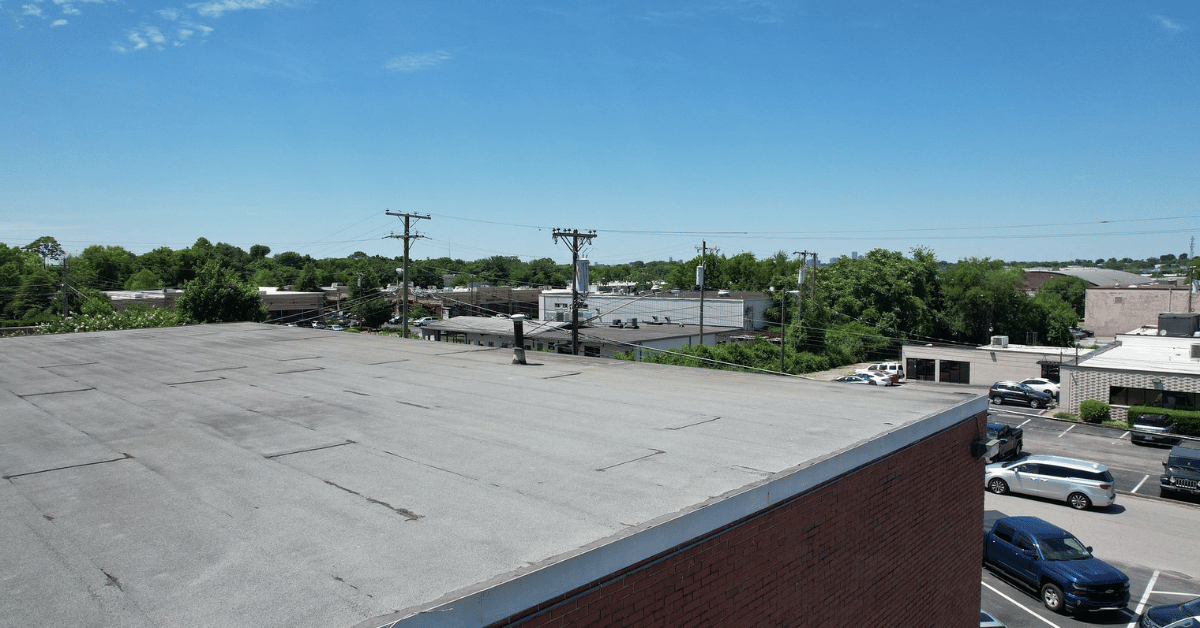
The International Building Code (IBC), which sets safety standards for commercial buildings, requires that roofs “serve to protect the building.” Having a roof that “protects the building” starts with design, materials selection, and installation when a facility is built or remodeled—events that occur infrequently and may be outside the scope of most businesses’ ongoing activity. But it also includes a regular inspection, maintenance, and repair program—activities that should be part of your operational planning to prolong the useful life of your roof and ensure it does its job in protecting your business from weather damage.
This article focuses on identifying and addressing common trouble spots, preventing problems before they start, and fixing them before it’s too late.
Benefits of Commercial Roofing
Investing in commercial roofing offers numerous benefits for business owners and property managers. A well-maintained commercial roof not only provides essential insulation but also significantly enhances energy efficiency, leading to reduced utility costs. A robust roofing system ensures the safety and security of both occupants and assets by protecting commercial buildings from harsh weather conditions, UV radiation, and water intrusion.
Moreover, a high-quality commercial roof can improve indoor air quality by preventing leaks and mold growth, contributing to a healthier work environment. A well-maintained roof’s aesthetic appeal can also enhance a building’s overall appearance, potentially increasing its market value. In the long run, businesses can enjoy substantial cost savings, improved durability, and enhanced property value by investing in a reliable commercial roofing system.

Types of Commercial Roofs
When it comes to commercial properties, there are several types of roofs to consider, each offering unique benefits and maintenance requirements:
-
Flat Roofs: Flat roofs are ideal for buildings with large, open spaces and are commonly used in commercial and industrial properties. They provide easy access for maintenance and installation of rooftop equipment.
-
Low-Slope Roofs: With a slight pitch, low-slope roofs are often found on commercial buildings like offices and retail stores. They offer efficient water drainage while maintaining a relatively flat appearance.
-
Metal Roofs: Known for their durability and energy efficiency, metal roofs are resistant to weathering and corrosion, making them a long-lasting option for commercial buildings.
-
Green Roofs: Covered with vegetation, green roofs provide excellent insulation, reduce stormwater runoff, and improve air quality. They are an eco-friendly choice for environmentally conscious businesses.
-
Shingle Roofs: Made from asphalt shingles, these roofs are famous for their affordability and ease of installation. They are a practical choice for many commercial properties.
-
Tile Roofs: Constructed from clay or concrete tiles, tile roofs offer exceptional durability, fire resistance, and aesthetic appeal, making them a premium option for commercial buildings.
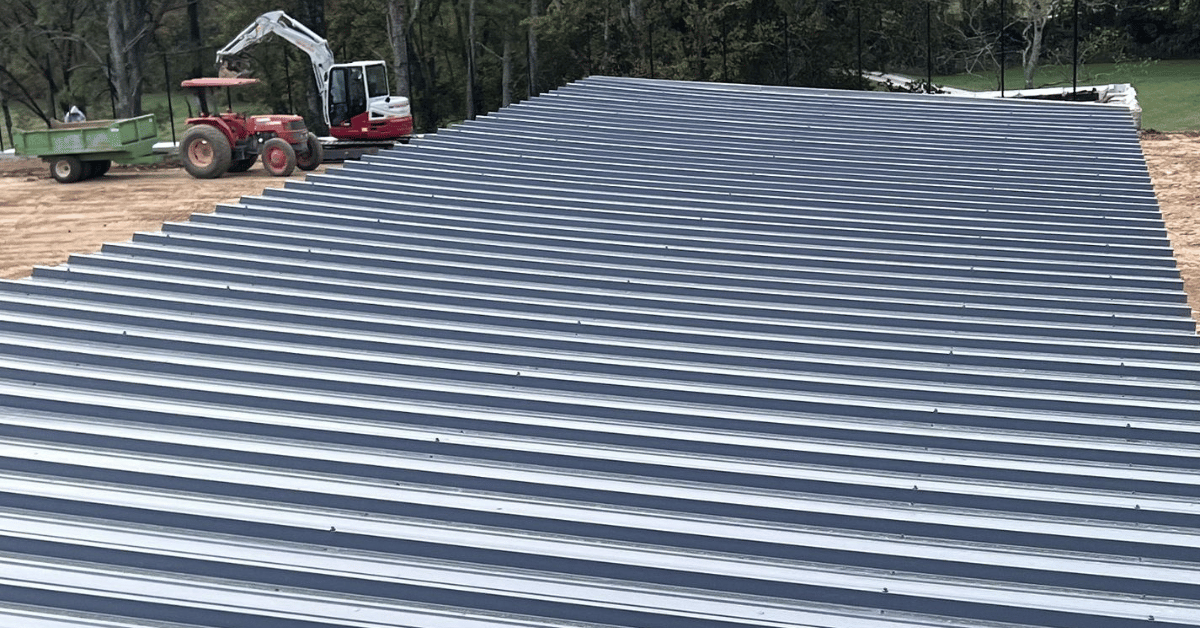
RECOGNIZING THE SIGNS OF A COMMERCIAL ROOFING PROBLEM
If it’s been a while since your roof was inspected, your first priority should be to identify and fix any major problems.
Signs of serious problems may be apparent even from inside the building. Water stains on a ceiling may signal a leak, which a crack or hole in the roof can cause. It’s important to understand that even the smallest leak can signify big trouble. Similarly, if the building has unexplained mold or odors inside, this may indicate a roof leak, resulting in water penetration. While internal water damage or mold may signal trouble above, it’s also important to visually inspect the roof to look for problems likely to worsen over time.
Depending on the slope of the roof and the ease of access, the building owner can sometimes inspect the roof, but in many cases, it makes sense to hire a contractor to ensure the job is done safely and correctly. Even if you are hiring a professional, reviewing the problems identified in this article may help you understand the significance of what he or she has identified and the need for action by a professional commercial roofer.
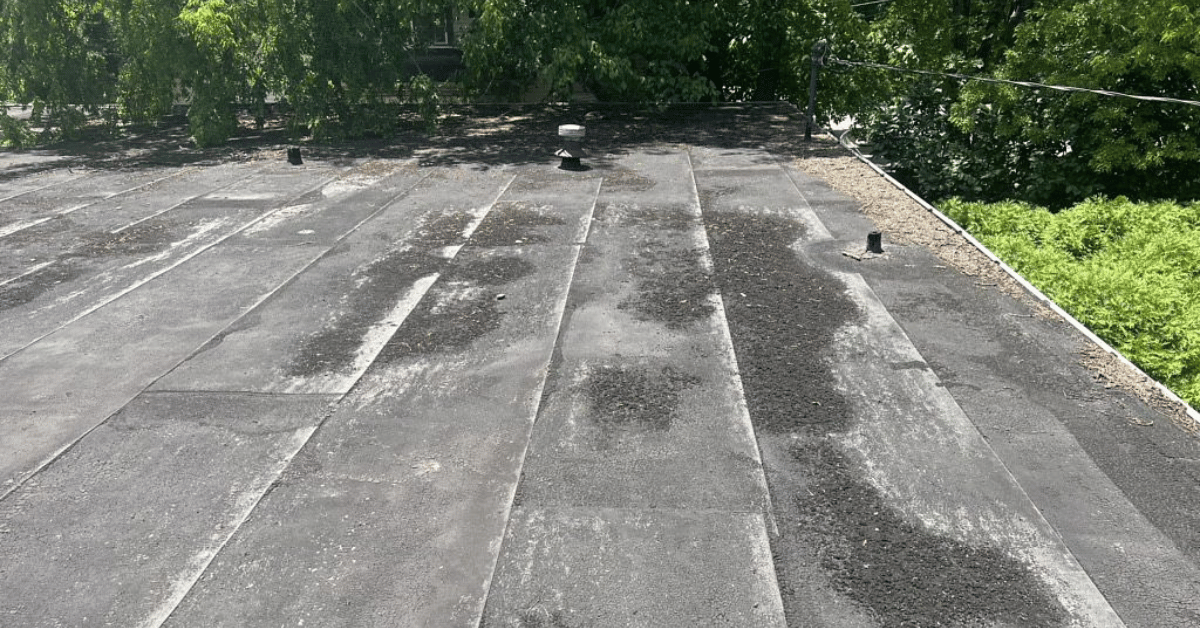
WHAT TO LOOK FOR ON THE ROOF—SOME VISUAL CLUES
Prolonged standing water (see below) or ponding on the roof can lead to premature aging and cover deterioration, leading to leaks. Leaks that go undetected can slowly rust steel roofs and rot wood decks and turn lightweight insulating concrete and gypsum decks into a thick paste-like substance. Additionally, excessive standing water can lead to significant additional weight, weakening the roof deck.
Bubbles (see below) may indicate trapped moisture within the roof cover, which can lead to leaks, reduce the cover’s life span, speed up the deck’s premature aging, and reduce the roof cover system’s effectiveness against uplift forces associated with a windstorm. Another cause of bubbles is the release of gasses from the insulation board that gets trapped below the cover. A roof cut or moisture survey of the roof cover (See IBHS’ “Repair, Recover, or Replace the Roof”) can be completed to diagnose.
Roof flashing is the strips of metal or other impervious material installed around the perimeter of the roof edge where the roof cover meets the wall. It is also installed around objects (such as rooftop equipment) that protrude from the roof to deflect water away from seams and joints. However, a gap in the flashing or roof cover perimeter (see below) significantly increases the potential for roof cover failure during a high wind event and water intrusion or mold. For further information, including flashing repairs and replacement guidance, please see IBHS’s resources for “Evaluating Coping and Flashing.”
Tears in the roof cover (see below) or worn or cracked seams can allow water to enter below the cover. To address these issues effectively, seeking professional commercial roofing services that can provide thorough inspections and repairs is advisable.
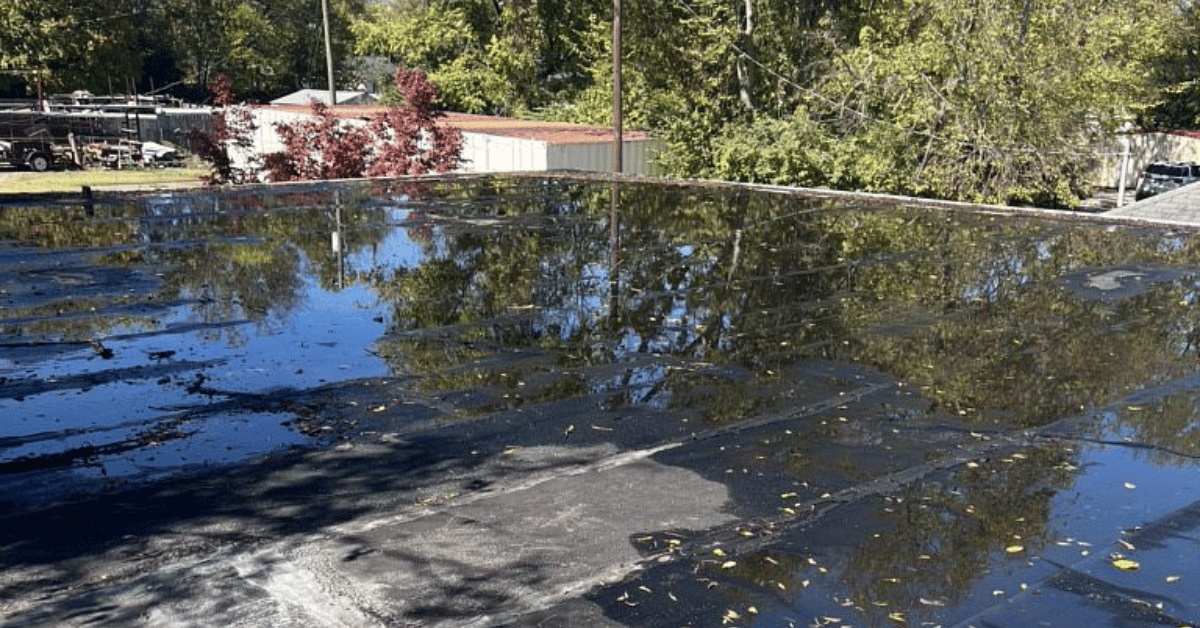
ADDITIONAL AREAS FOR INSPECTION IN COMMERCIAL PROPERTIES
If there is a lightning protection system (see below), check if it is loose or detached, as shown below. This can lead to a tear or puncture in the roof covering, especially during strong winds. A lightning protection system with disconnected metal cables or aerials can no longer provide the intended protection for the building’s occupants.
If there are skylights (see below), they should be checked for securement. Skylights that are not well sealed and secured around the frame’s edge can leak, which may cause them to become dislodged and allow wind-driven rain and debris to enter the building, especially during a high-wind event.
Also, over time, the plastic domed panels can become brittle and very susceptible to cracks. Ensuring that all aspects of your commercial roofing needs are met during inspections can prevent future issues and prolong the life of your roof.
Choosing a Reputable Commercial Roofing Company
Selecting a reputable commercial roofing company is crucial for ensuring the quality and longevity of your roofing system. Here are some key factors to consider:
-
Experience: Opt for a company with extensive experience in commercial roofing, including installation, repair, and maintenance. Experienced professionals are more likely to deliver high-quality work.
-
Licenses and Certifications: Ensure the company is properly licensed and certified to operate in your state. Certifications from roofing material manufacturers can also be a good indicator of expertise.
-
Reputation: Check online reviews, ask for referrals, and verify the company’s reputation with the Better Business Bureau and local trade associations. A strong reputation is a good sign of reliable service.
-
Insurance and Warranties: Make sure the company has adequate insurance coverage and offers warranties for its work and materials. This will protect you from potential liabilities and ensure peace of mind.
-
Customer Service: Look for a company that provides excellent customer service, including prompt communication, flexible scheduling, and a commitment to customer satisfaction. Excellent customer service is a hallmark of a professional roofing company.
Factors Affecting Commercial Roofing Costs
The cost of a commercial roofing project can vary widely based on several factors:
-
Roof Size and Complexity: Larger and more complex roofs require more materials and labor, which can increase costs. The design and layout of the roof also play a significant role.
-
Roofing Material: Different materials come with varying price tags. For instance, metal and tile roofs are more expensive than asphalt shingles, but they may offer longer lifespans and better performance.
-
Location: Roofing costs can differ depending on the location. Urban areas typically have higher costs due to increased labor and material expenses than rural areas.
-
Labor Costs: Labor costs vary based on the region and the job’s complexity. Areas with higher labor rates will naturally see higher overall project costs.
-
Permits and Inspections: Depending on local regulations, permits and inspections may be required, adding to the overall cost. It’s important to factor these into your budget.
Common Commercial Roofing Mistakes
Avoiding common commercial roofing mistakes is essential for ensuring the longevity and performance of your roof. Here are some pitfalls to watch out for:
-
Inadequate Maintenance: Failing to inspect and maintain a commercial roof regularly can lead to premature aging and reduced performance. Regular maintenance is critical to extending the life of your roof.
-
Poor Installation: Improper installation can result in leaks, reduced performance, and increased maintenance costs. Always hire professional roofers to ensure the job is done correctly.
-
Incompatible Materials: Using materials incompatible with your roofing system can lead to premature aging and reduced performance. Consult with a professional roofer to choose the right materials.
-
Insufficient Drainage: Proper drainage is crucial to prevent water accumulation, leaks, and reduced performance. Make sure your roof has an effective drainage system in place.
-
Lack of Regular Inspections: Regular inspections are vital for detecting issues early and preventing major problems. Schedule routine inspections to keep your roof in top condition.
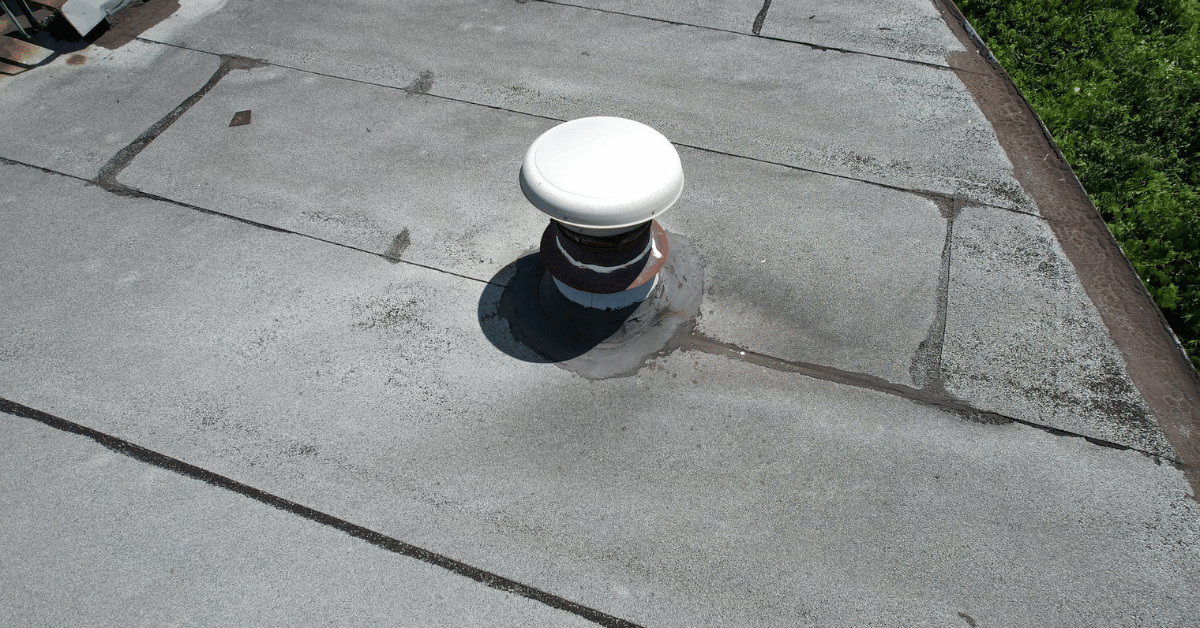
By being aware of these common mistakes and taking proactive measures, you can ensure that your commercial roof remains in excellent condition and provides reliable protection for your commercial property.
CARE AND MAINTENANCE BY A PROFESSIONAL COMMERCIAL ROOFER
Regular care and preventive maintenance are the best way to avoid roof-related problems and strengthen weather resistance. Proper maintenance also prolongs the life of a roof and, in many instances, will allow for “repair” instead of “replacement” when a problem is identified. The frequency of inspections for routine maintenance depends on several factors, including the roof’s age, recent weather events, rooftop foot traffic, and conditions identified during previous inspections. That said, scheduling inspections every 6 months (fall and spring) effectively ensures the pressure of other vital businesses does not sidetrack them. Regular maintenance is essential to address all your roofing needs and ensure the longevity of your roof.
Here are some things to keep in mind for roof maintenance:
-
All inspections should look for and develop a repair plan for the items that indicate signs of problems described above.
-
After a severe windstorm or hurricane, inspect your roof for damage, as repeated storms can reduce its strength. Even if the roof survived a storm, it may have been damaged or weakened enough to fail during the next storm or the one after that.
-
Inspections should look for signs of previous leaks or other problems to make sure that repairs have stayed intact.
-
Remove any loose objects and accumulated debris. A clean roof eliminates leaves and other materials that tend to hold moisture, which can speed up the deterioration of the roofing materials. In dry areas, keeping the roof clear of debris reduces the risk that embers from a wildfire will ignite it.
-
Keep trees trimmed. This prevents branches from rubbing against the roof and leaves from accumulating on the roof and clogging drains and gutters.
-
Check gutters and downspouts for leaves, twigs, and other debris that will inhibit proper drainage.
-
If located in a hurricane-prone area, check if the gutters include gutter straps designed to resist uplift.
-
Inspect rooftop vents and equipment to ensure they are well sealed. Seal any gaps with flashing cement. If the metal flashing is badly deteriorated or if vents can wiggle back and forth, replacement may be necessary.
-
After a hail event with hail stones larger than ¾ inch, contact your insurer and have the roof inspected, even if you are not aware of any damage.
-
If concerns exist after a maintenance review of the roof, consulting a professional roofing contractor may be helpful. The contractor can also help determine the roof’s health, estimate its remaining life, develop a maintenance plan, and identify additional steps to protect the roof.
The following are some things to consider when hiring a roofing contractor:
-
Look for established, licensed, or bonded professionals.
-
Obtain several bids for services.
-
Ask for and check references that include other commercial buildings in your area.
-
Ask to see certificates of insurance. Make sure that liability and workers’ compensation insurance coverage is current.
-
Contact your local Better Business Bureau to check for complaints filed against the inspector.
-
Make sure the bid clearly defines the work that will be done, including hauling away of debris and grounds cleanup.
-
If your new roof is installed on an existing building, check the deck for water-soaked or deteriorated material; have damaged material replaced as part of the contract.
-
Discuss, verify, and receive the warranty information in writing. Confirm what is and is not covered. Keep copies of all warranties and a record of work performed to assist in future inspections, maintenance, and repairs.
A properly maintained roof is necessary to protect your building and its business. Remember that a little maintenance can result in many savings, especially when compared to the cost of damage from a small, undetected leak or a catastrophic roof failure.

